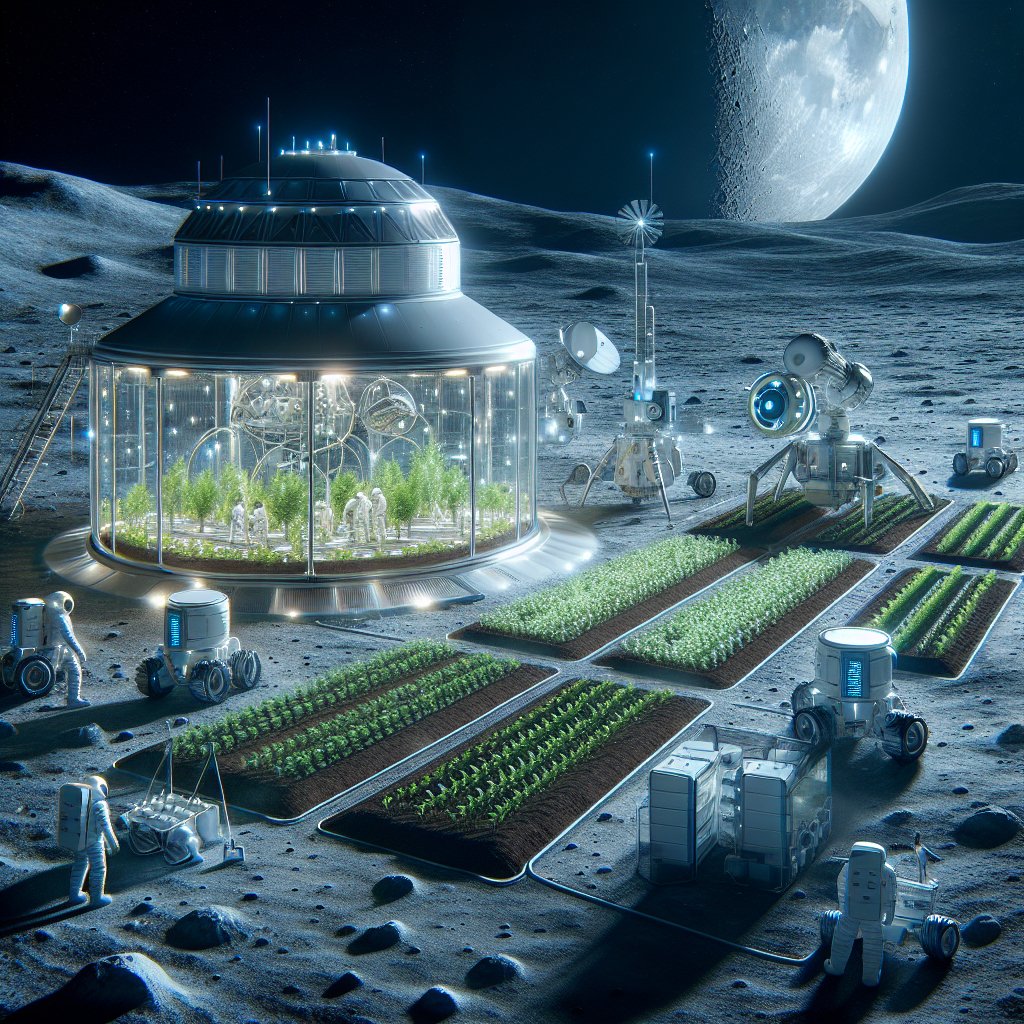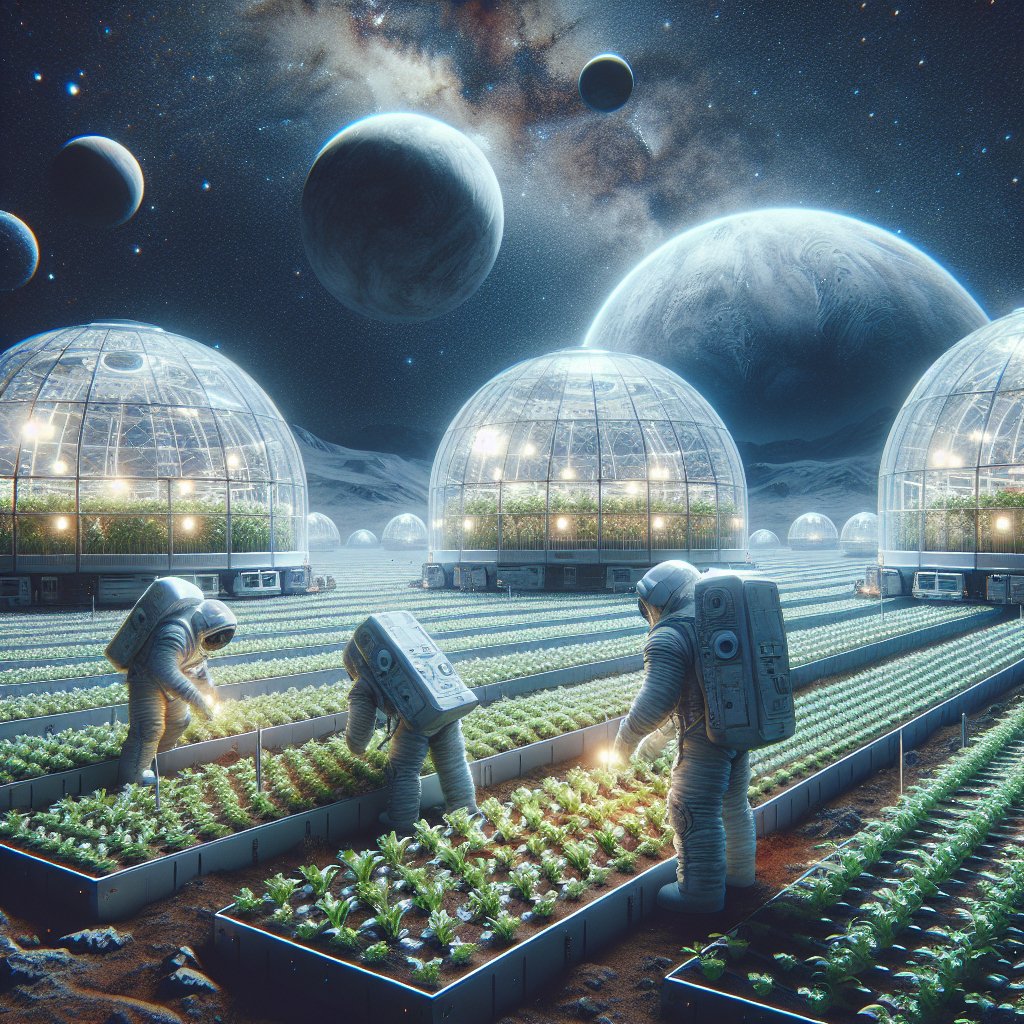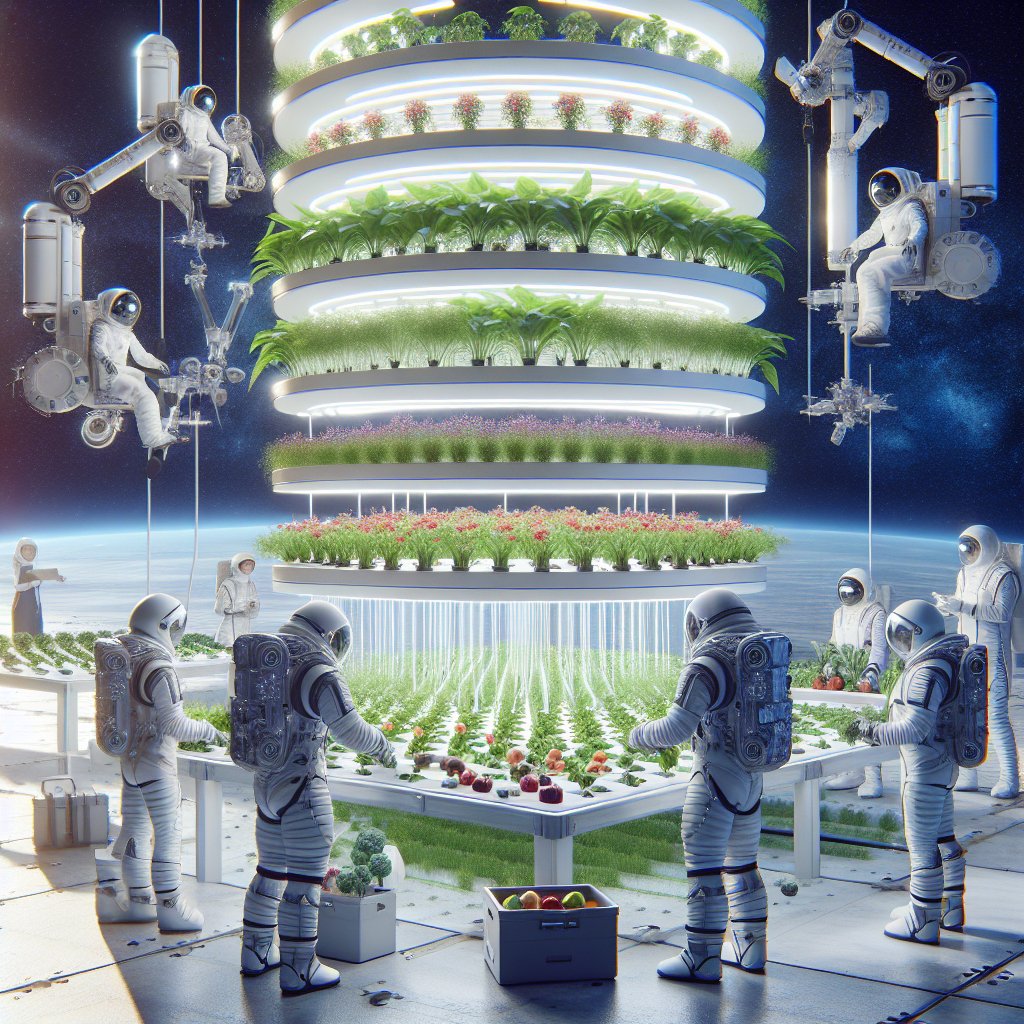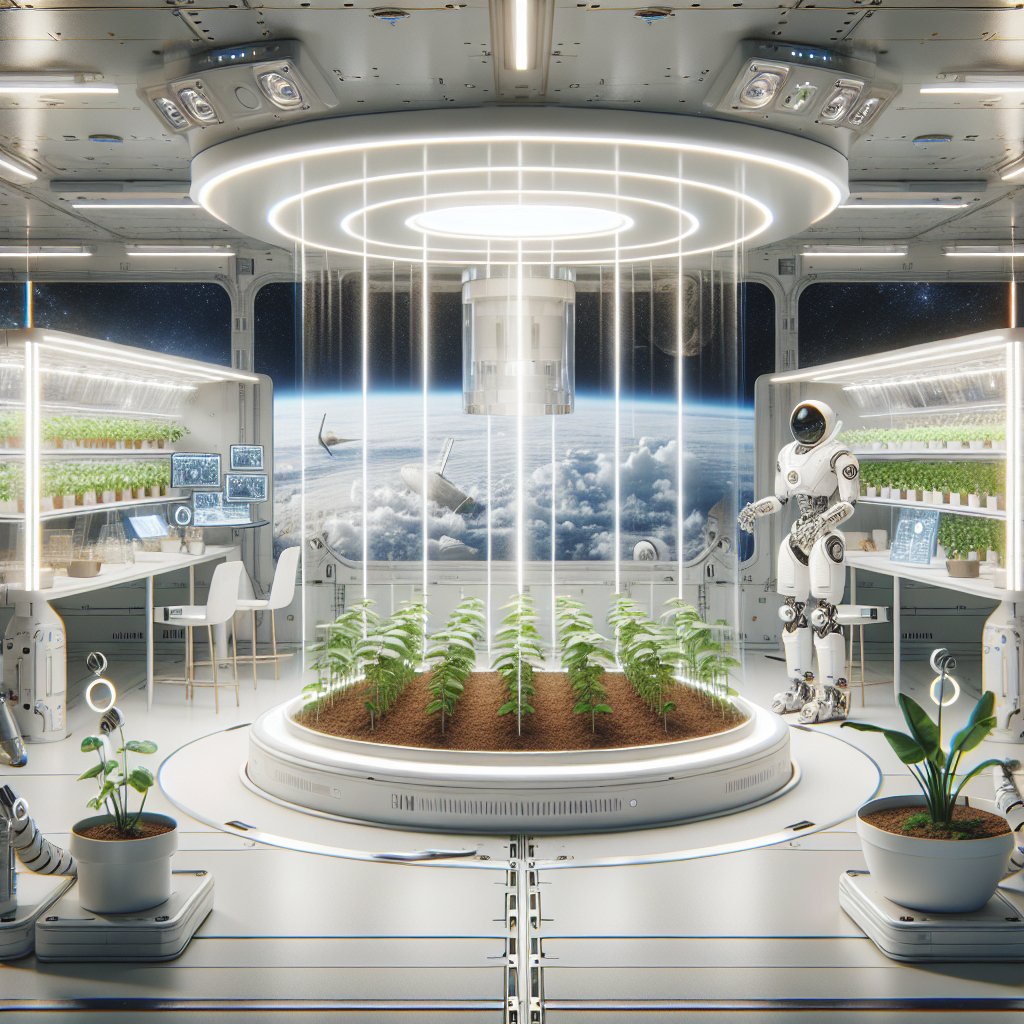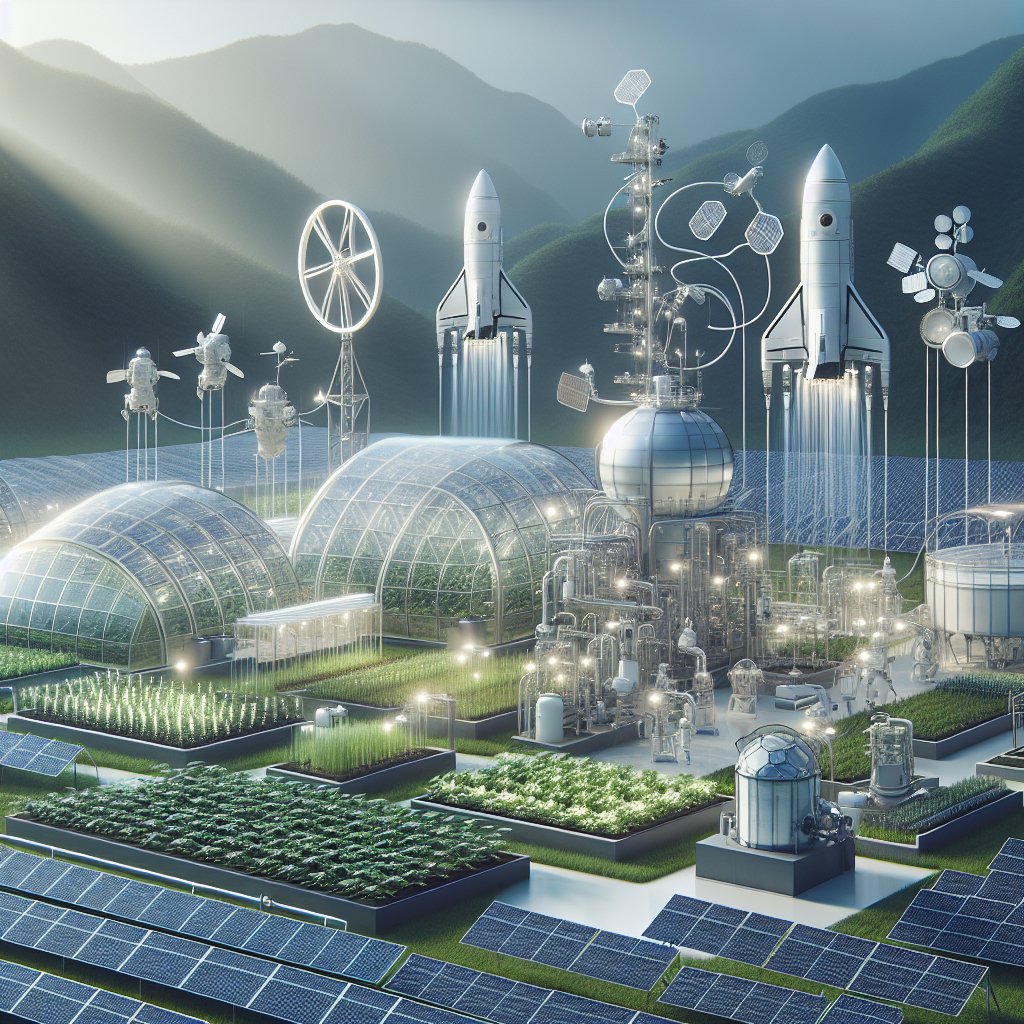The concept of future farming on the Moon presents a fascinating intersection of agriculture and space exploration. As humanity looks to expand its presence beyond Earth, the need for sustainable food production systems in extraterrestrial environments becomes increasingly critical. This article delves into the innovative concepts that could shape lunar agriculture and the challenges that must be overcome to make these ideas a reality.
Concepts for Lunar Agriculture
Farming on the Moon is not merely a dream; it is a necessity for long-term human habitation. The Moon’s harsh environment poses unique challenges, but innovative concepts are emerging to address these issues. Here are some of the most promising ideas for lunar agriculture:
1. Hydroponics and Aeroponics
Hydroponics and aeroponics are soil-less farming techniques that could thrive in the Moon’s low-gravity environment. These methods utilize nutrient-rich water solutions or mist to grow plants, significantly reducing the need for soil and water. Hydroponics involves submerging plant roots in a nutrient solution, while aeroponics suspends plants in the air and delivers nutrients through a fine mist.
- Advantages: Both systems require less water than traditional farming and can be easily adapted to controlled environments, making them ideal for lunar habitats.
- Challenges: Developing efficient systems that can operate in the Moon’s extreme temperatures and radiation levels is crucial.
2. Regenerative Life Support Systems
Creating a closed-loop regenerative life support system is essential for sustainable lunar agriculture. This system would recycle waste products, such as carbon dioxide and organic matter, to produce food and oxygen. By integrating plant growth with waste management, astronauts could create a self-sustaining ecosystem.
- Advantages: This approach minimizes the need for resupply missions from Earth, reducing costs and increasing the feasibility of long-term lunar missions.
- Challenges: Designing a system that can effectively balance the inputs and outputs of nutrients and gases is complex and requires extensive research.
3. Lunar Greenhouses
Establishing greenhouses on the Moon could provide a controlled environment for growing crops. These structures would need to be airtight and insulated to protect plants from the Moon’s extreme temperatures and radiation. Utilizing materials available on the Moon, such as regolith, could help in constructing these greenhouses.
- Advantages: Greenhouses can create optimal growing conditions, allowing for year-round crop production.
- Challenges: Transporting materials and technology to the Moon for greenhouse construction poses logistical challenges.
4. Genetic Engineering and Crop Selection
To maximize agricultural output on the Moon, researchers may need to explore genetic engineering and the selection of crops that can thrive in low-gravity and high-radiation environments. Developing resilient plant varieties that can grow in lunar soil or hydroponic systems will be crucial.
- Advantages: Tailoring crops to lunar conditions could enhance food security and nutritional value.
- Challenges: Ethical considerations and regulatory frameworks surrounding genetic modification must be addressed.
Challenges of Lunar Farming
While the concepts for lunar agriculture are promising, several significant challenges must be addressed to make them a reality. Understanding these challenges is essential for developing effective strategies for farming on the Moon.
1. Environmental Conditions
The Moon’s environment is harsh and unforgiving. With extreme temperature fluctuations, high levels of radiation, and a lack of atmosphere, any agricultural system must be designed to withstand these conditions. The average temperature on the Moon can range from -173°C at night to 127°C during the day, making it essential to create stable growing environments.
2. Resource Availability
Access to water and nutrients is critical for agriculture. While there is evidence of water ice in permanently shadowed craters, extracting and utilizing this resource poses significant technical challenges. Additionally, the availability of essential nutrients for plant growth must be assessed, as lunar regolith may not provide the necessary elements for healthy crops.
3. Transportation and Infrastructure
Transporting equipment, seeds, and technology from Earth to the Moon is a logistical challenge. Developing a robust infrastructure for lunar farming will require significant investment and innovation. This includes not only the transportation of materials but also the establishment of habitats and facilities to support agricultural activities.
4. Psychological and Social Factors
Farming on the Moon will not only be a technical challenge but also a psychological one. Astronauts will need to adapt to living and working in isolated environments for extended periods. The social dynamics of working in small teams will also play a role in the success of lunar agriculture. Ensuring the mental well-being of crew members is essential for maintaining productivity and morale.
5. Economic Viability
Finally, the economic viability of lunar farming must be considered. The costs associated with establishing agricultural systems on the Moon may be substantial. Developing a sustainable economic model that justifies the investment in lunar agriculture will be crucial for its long-term success.
Conclusion
The future of farming on the Moon is filled with potential and challenges. As humanity prepares for a more permanent presence on the lunar surface, innovative agricultural concepts will be essential for ensuring food security and sustainability. By addressing the environmental, logistical, and psychological challenges, we can pave the way for successful lunar agriculture. The journey to farming on the Moon may be complex, but the rewards of expanding our agricultural horizons beyond Earth are immense, offering new opportunities for exploration and survival in the cosmos.
